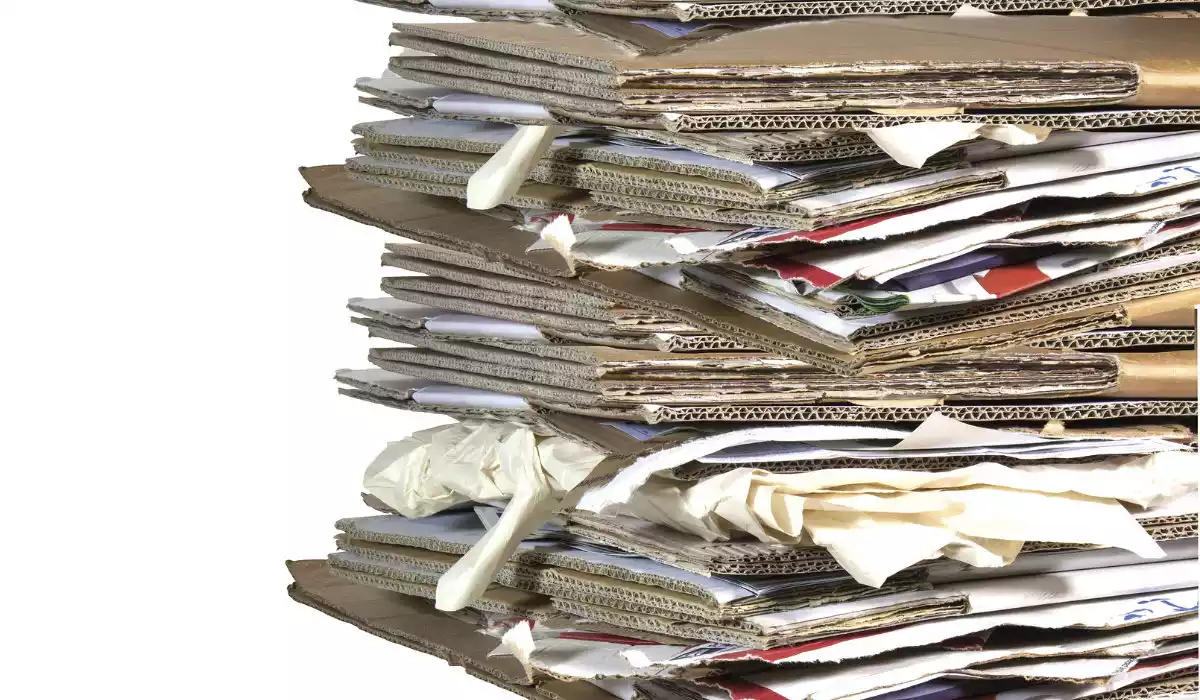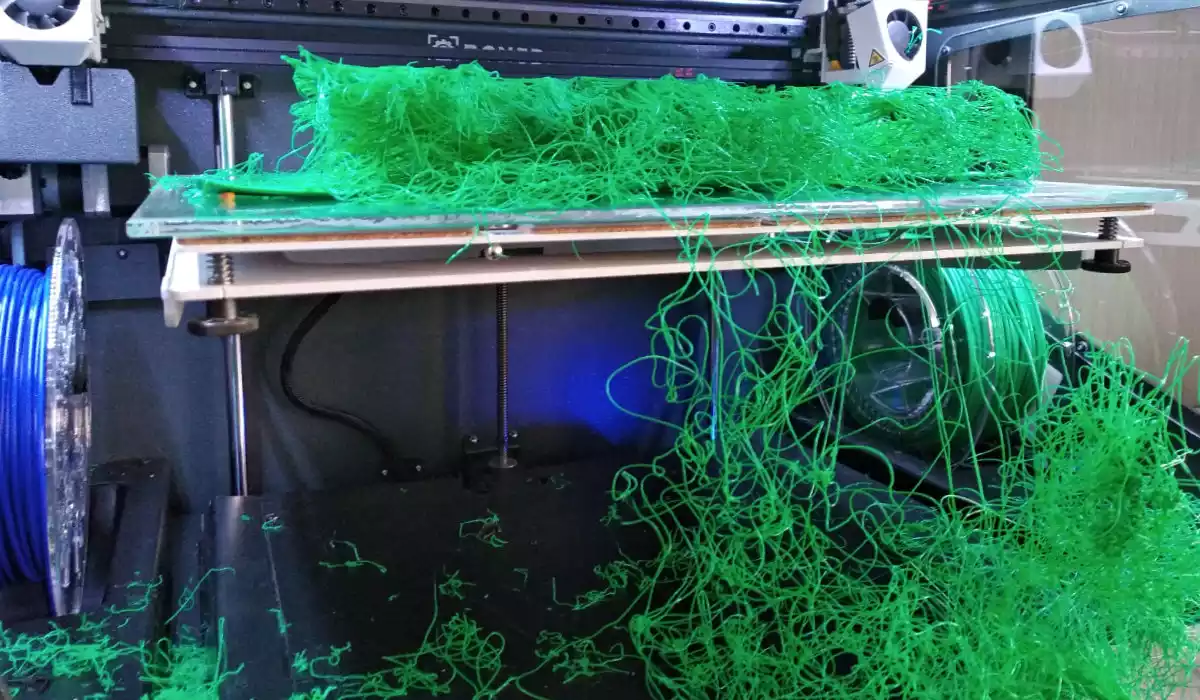One of the biggest challenges in offering customers ecological advertising or packaging applications is trying to make them aware that bioplastics – materials that naturally biodegrade or compost in the natural environment – are a better option than paper and cardboard. Ultimately, in most cases, we manage to convince them of the eco-friendliness of bioplastics, but alternative designs based on cardboard or paper usually win at a lower price – even though they are inferior or less efficient in terms of geometry or dimensions.
Meanwhile, this approach is wrong from the start – contrary to popular belief, paper or cardboard is not very ecological and should not be taken into account for any serious comparison.
Every person subconsciously perceives paper as an ecological raw material, because it is made of cellulose – a natural polymer that is the main component of plant cell walls. Most paper is made from trees, although some paper can be made from other types of plants, such as bamboo and hemp. That should solve the problem, right? However, hardly anyone realizes how much it costs to produce it? About 24 trees are needed to create 1 ton of paper, which must be cut down and processed in a complicated process that additionally consumes huge amounts of water, which is irretrievably contaminated with the chemicals used.
How does paper manufacturing look like?
This is the basic process of making paper:
- collection of raw materials: trees are cut down and transported to the paper factory; the most commonly used trees are pine and eucalyptus, which have a high cellulose content
- “pulping”: trees are transformed into pulp, i.e. pulp; this is achieved by boiling the wood in a solution of sodium hydroxide and sodium sulfite, which dissolves the lignin – the substance that holds the tree cells together, leaving only the cellulose
- “bleaching”: the pulp is then bleached with chlorine or oxidizing substances to remove any remaining impurities and give the paper its characteristic whiteness
- shaping and drying: the pulp is sprayed on a large screen to form a sheet of paper; the water is removed by squeezing and drying, leaving only a thin sheet of paper
- finishing: the finished paper in the form of a roll or sheets can be additionally pressed and smoothed to improve its appearance and surface quality; it can also be coated with special chemicals to give it additional properties such as moisture resistance.
Knowing how paper is made, let’s look at how it translates into energy consumption, i.e. “carbon footprint”. For example, the production of a “green” paper bag requires more than four times as much energy as a “non-green” plastic bag. The chemicals used to make paper are toxic and contribute to air pollution. They also pollute watercourses – rivers and lakes, and the toxicity of these chemicals persists for a long time creating harmful sediments. These, in turn, transfer to plants and animals, entering the long food chain, at the end of which there is always a human being.
Paper bags produce 70% more air pollution and 50% more water pollution than the production of plastic bags. In 2005, the Scottish Government published an Environmental Impact Assessment comparing the production of a lightweight plastic bag versus a paper bag:
| Environmental impact indicator | HDPE plastic bag | Paper bag |
|---|---|---|
| Consumption of non-renewable primary energy | 1.0 | 1.1 |
| Water consumption | 1.0 | 4.0 |
| Climate change (greenhouse gas emissions) | 1.0 | 3.3 |
| Acidification of the atmosphere | 1.0 | 1.9 |
| Air quality (ground-level ozone formation) | 1.0 | 1.3 |
| Water eutrophication (algal blooms, dead zones, fish kills) | 1.0 | 14.0 |
| Production of solid waste | 1.0 | 2.7 |
| Littering | 1.0 | 0.2 |
As you can see from the table above, paper has a higher environmental impact in almost every category. Paper proponents argue that paper bags are nevertheless greener because they are 100% recyclable. However, to achieve this, a paper bag would have to be used at least 3 times to offset the environmental impact of its production. Unfortunately, paper bags are not durable enough to be used up to 3 times and most often end their life after the first use. In addition, they are heavier, less durable and are not suitable for use in rain or high humidity. As a consequence, their use increases, and thus – they end up in the garbage faster. Even if they then undergo a recycling process, this does not stop the increase in their production – which, as has already been shown, consumes more energy.
Paper production also has other consequences. Because paper is heavier than plastic, it is more expensive to transport and generates more pollution. According to a document published in 2011 by the Northern Ireland Assembly, for every truck loaded with plastic bags, there are as many as seven trucks with the same number of paper bags.
Plastic as an alternative to paper…?
Does this mean, then, that we should completely abandon paper for the production of bags in favor of plastic? NONE OF THESE THINGS! Plastic bags are mainly made of ethylene, which is the so-called “forever plastic” – a by-product of oil production. It does not biodegrade in the natural environment, but degrades to the form of microplastic, which is one of the biggest problems and civilization challenges of today’s world. Traditional fossil-based plastic is even worse than paper, and from an ecological perspective, it should never be considered as any alternative – no matter how much less energy is used to produce it.
The solution may be bioplastics – materials based on natural raw materials, such as thermoplastic starch, which decompose in the natural environment without polluting it. Of course, they are not perfect – organic decomposition also has an impact on the increase in CO2 emissions, and the soil in which bioplastics compost should not be used for agricultural crops.
Summary
Nevertheless, the aim of this study is to state that paper or cardboard should not automatically be seen as ecological solutions, because their production is very invasive when it comes to the environment. Paper loses in this respect even to synthetic materials, which are rightly perceived as “bad”. When choosing an ecological material, however, it is worth looking at this issue much more broadly and not succumb to stereotypes or common ideas on the subject.
Source: www.bioplasticsnews.com
Cover photo: www.pixabay.com (Creative Commons Zero (CC0) license – “CC0 Content”)


